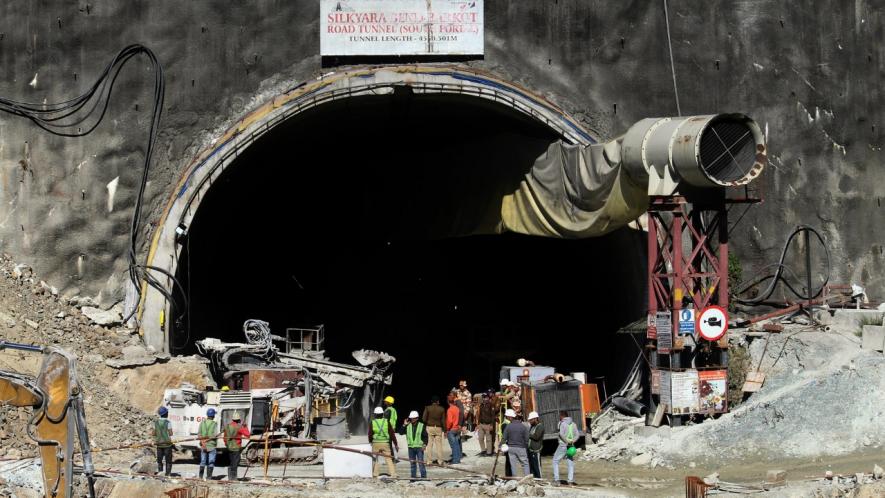Uttarakhand Tunnel Collapsed 20 Times in 5 Years: Report

Uttarkashi: Security personnel and others at the under-construction tunnel between Silkyara and Dandalgaon on the Brahmakhal-Yamunotri national highway, days after a portion of the tunnel collapsed trapping several workers inside, in Uttarkashi district, Saturday, Nov. 18, 2023. The operation to rescue 40 labourers stuck in the tunnel has been suspended since Friday. (PTI Photo)
Uttarakhand’s Silkyara-Barkot tunnel, which partially collapsed on November 12 trapping 41 workers for 17 days, had collapsed around 20 times in the last five years.
According to a Times of India report, the 4.5 km-long two-lane bidirectional tunnel, in Uttarkashi district and the longest on the Char Dham all-weather road project, collapsed on both the Silkyara side and the Barkot end.
“Around 19-20 minor-to-medium-level collapses occurred during the construction of the tunnel,” Anshu Manish Khalkho, director (administration and finance) of the National Highways Infrastructure Development Corporation Limited (NHIDCL), the PSU overseeing the project, told the newspaper on Thursday,
Khalkho termed the collapses “normal”. “Such incidents happen during every tunnel construction project, but we were unlucky this time that workers got trapped.”
More collapses, also termed as ‘cavities’, “occurred on the Barkot side than the Silkyara side”.
An area of 160-260 meters inside the mouth of the tunnel from Silkyara end was identified as a ‘red zone’ having brittle rocks. “Additional protective measures will be taken to reinforce the area,” said Khalkho.
Another official involved in the construction requesting anonymity said , “The tunnel had faced numerous cavity collapses due to the challenging geology of the region and significant rock deformation.”
Bernard Gruppe, an European company providing design services to Navayuga Engineering, the construction firm that has got the contract for the tunnel construction, also had highlighted the region’s challenging geology.
“Geological conditions (at the tunnel site) proved to be more challenging than predicted in the tender documents,” the company had said.
Three years after the UPA government waived environmental clearance for road projects less than 100 km long in 2013, the NDA government used the waiver, according to report by The Wire.
The government ignored a big threat, according to Himanshu Thakkar, the coordinator of the South Asia Network on Dams, Rivers and People.
The Main Himalayan Thrust, where the Indian plate pushes under the Eurasian plate, runs through Uttarakhand and is close to the tunnel site. Obviously, this has “seismic and shear zone implications”, Thakkar wrote last month.
“In the case of the Char Dham Highway project, even environmental impact assessment was avoided by breaking the 900-kilometre long highway into some 53 smaller projects,” he wrote.
“In case of the Silkyara-Barkot tunnel, it is not even clear if the geological alignment assessments included the existence of the Main Central Thrust close to the tunnel site, with seismic and shear zone implications,” he states.
Despite locals approaching the National Green Tribunal and Supreme Court, but the project continued.
In February 2018, the Cabinet approved the Barkot-Silkyara tunnel. In June, NHIDCL awarded the tender for construction to Hyderabad-based Navayuga Engineering Company. In the same year, Navayuga hired Bernard Gruppe to design and build the tunnel.
Get the latest reports & analysis with people's perspective on Protests, movements & deep analytical videos, discussions of the current affairs in your Telegram app. Subscribe to NewsClick's Telegram channel & get Real-Time updates on stories, as they get published on our website.
























